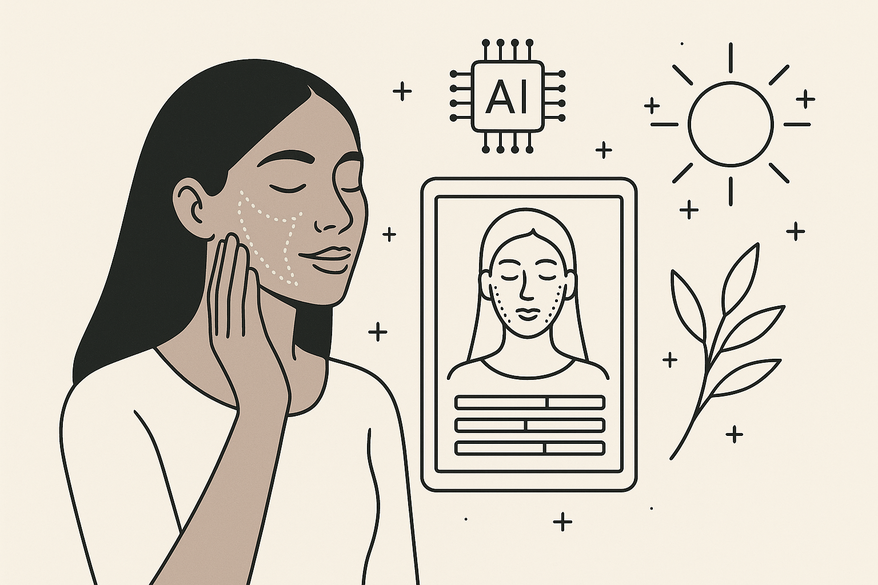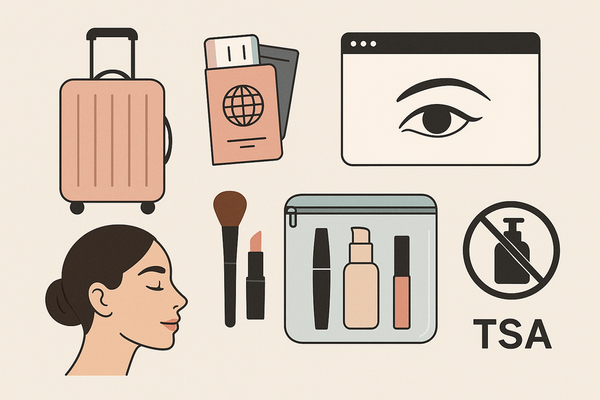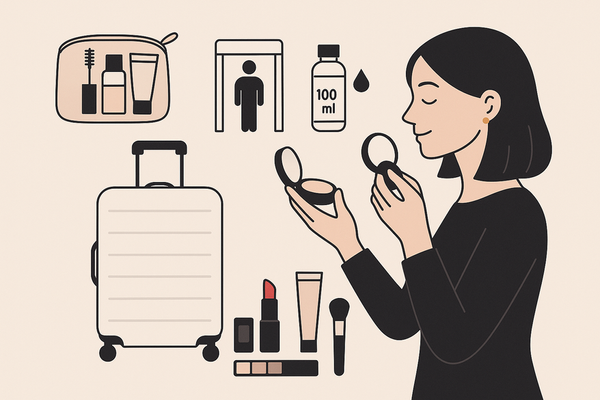Revolutionizing Your Glow: How AI Skin Radiance Analysis Transforms Skincare
Discover how AI skin radiance analysis is transforming skincare with precise, personalized insights to enhance luminosity and vitality.

Estimated reading time: 7 minutes
Key Takeaways
- AI-driven skin radiance analysis provides objective, data-driven assessments of luminosity, clarity, and subsurface health.
- Machine learning and computer vision quantify radiance metrics and detect early signs of aging.
- Personalized skincare routines are generated based on numerical radiance scores and heatmaps.
- Users can track progress over time and adjust regimens with evidence-based insights.
- Privacy, bias mitigation, and clinical validation are essential when choosing a tool.
Table of Contents
- Introduction
- Understanding AI in Skincare
- What Is AI Skin Radiance Analysis?
- How AI Skin Radiance Analysis Works
- Benefits and Limitations of AI Skin Radiance Analysis
- Future of AI Skin Radiance Analysis
- Practical Tips for Enhancing Radiance
- Conclusion
Introduction
AI skin radiance analysis is reshaping how we measure and enhance our skin’s natural glow. By applying machine learning and sophisticated imaging, personalized skincare moves from intuition to precision.
Skin radiance refers to the visible luminosity, clarity, and healthy glow of your complexion—a hallmark of youth and vitality.
Understanding AI in Skincare
Artificial intelligence in skincare leverages deep neural networks, computer vision, and image processing to deliver objective, reproducible evaluations based on your photos. Traditional assessments often vary by observer, but AI offers a rapid, multi-dimensional analysis that probes below the surface. For a detailed comparison, see Traditional vs. AI makeup analysis.
Benefits of AI Skin Radiance Analysis- Eliminates human guesswork and bias.
- Delivers consistent, objective measurements.
- Generates tailored product and treatment plans.
- Tracks subtle changes in radiance over time.
Experience Example
A beauty clinic replaced manual glow scoring with AI. Clients received weekly radiance reports, allowing practitioners to fine-tune routines based on concrete data rather than subjective notes.
What Is AI Skin Radiance Analysis?
This process transforms raw images into actionable data by evaluating luminosity, clarity, pigmentation, moisture, collagen integrity, and inflammation.
Key Functionalities
- Quantifies radiance, luminosity, and clarity scores.
- Assesses pigmentation, hydration levels, and subsurface markers.
- Detects early signs of aging before they manifest visibly.
- Produces a comprehensive skin-health profile for targeted routines.
Core Technologies
- Machine learning models trained on millions of labeled skin images.
- High-resolution imaging and real-time computer vision via smartphones or scanners.
- Augmented reality overlays for live visualization of issues and treatments.
Data Workflow
- User captures standardized images under controlled lighting.
- Images upload to a secure cloud or local processor.
- Algorithms extract features and compute radiance scores plus insights.
For foundation-matching insights, see our skin tone analyzer.
Experience Example
A user scans her face weekly with guided lighting. AI identifies a clarity dip tied to seasonal dryness and recommends extra hydration.
How AI Skin Radiance Analysis Works
Step 1 – Image Capture
- Guided capture protocols ensure consistency in lighting, distance, and angles.
Step 2 – Algorithmic Analysis
- AI examines surface and subsurface features—pigmentation, texture, vascular health—to determine radiance contributors.
Step 3 – Results Interpretation
- Generates a visual report: numeric radiance score, heatmaps, and prioritized suggestions.
Case Study
A 35-year-old user with clear-looking skin uncovers early dehydration via AI and adds a hyaluronic acid serum—her radiance score climbs in two weeks.
- Syncs with skincare apps for reminders.
- Links to e-commerce platforms for product orders.
- Connects with wearables for holistic wellness tracking.
Experience Example
A teledermatology service integrates AI radiance analysis; patients upload selfies pre-consult, enabling dermatologists to fast-track treatment plans.
Benefits and Limitations of AI Skin Radiance Analysis
Benefits for Consumers & Pros
- Objective, data-driven skin assessments.
- Early issue detection (pigmentation, dehydration).
- Customized regimens with precise product matches.
- Progress monitoring via periodic radiance scoring.
Limitations & Concerns
- Privacy: Sensitive facial data requires secure storage and transparent policies.
- Bias: Models may underperform on underrepresented skin tones if datasets lack diversity.
Tool-Selection Tips
- Verify clinical validation and peer-reviewed performance data.
- Review privacy policies and data-use transparency.
- Check coverage across Fitzpatrick skin types to minimize bias.
Expert Tip
Dr. Anita Patel, board-certified dermatologist, notes: “Ensure your AI tool has been tested on diverse subjects to avoid one-size-fits-all results.”
Future of AI Skin Radiance Analysis
Anticipated Tech Advances
- Enhanced computer vision & deep learning for subclinical issue detection.
- Integration with genomics and continuous health monitoring for personalized recommendations.
Expanded Ecosystem
- Wearable sensors feeding live skin data into AI engines.
- Teledermatology platforms using AI for remote triage and treatment.
- Unified digital health records linking skin metrics with overall wellness.
Industry Impact
- Democratization of dermatology-grade insights for at-home users.
- New business models in beauty, telehealth, and preventive skin medicine.
Experience Example
A startup uses smartwatch skin sensors plus AI to recommend midday SPF boosts on high-UV days.
Practical Tips for Enhancing Radiance
- Adjust hydration, SPF use, and targeted treatments based on radiance score changes.
- Re-scan monthly to track improvements and tweak routines.
Science-Backed Products
- Vitamin C serums for brightness, niacinamide for clarity.
- Hyaluronic acid moisturizers for hydration.
- Broad-spectrum SPF 30+ sunscreens to protect new skin cells.
Expert Guidance
“Use AI insights as a guide, but confirm major regimen changes with a professional to address medical concerns,” advises Dr. Patel.
Establish Your Routine:
• Schedule monthly AI scans.
• Document products and radiance scores in a digital journal.
(Also see the ultimate pre-makeup skincare routine.)
Conclusion
AI skin radiance analysis empowers individuals and professionals with objective, data-driven insights into skin health. By measuring luminosity, clarity, and subsurface factors, this technology delivers personalized recommendations that boost glow and resilience. As AI evolves and integrates with genomics, wearables, and telehealth, it will further democratize dermatology-grade skincare. Explore reputable platforms, monitor your scores, and partner with experts to maintain vibrant skin.
Platforms such as Makeup Check AI demonstrate the power of AI for personalized radiance and makeup analysis.
Call to Action
Share your AI skin analysis experiences in the comments below and subscribe for the latest in AI-driven beauty.
FAQ
Q: What algorithms power skin radiance analysis?
A: Most tools use deep convolutional neural networks trained on diverse skin-image datasets, combined with computer-vision and image-processing pipelines.
Q: Is my facial data secure?
A: Reputable platforms employ end-to-end encryption, secure cloud storage, and transparent privacy policies. Always review terms before uploading images.
Q: Who benefits from AI skin radiance analysis?
A: Anyone seeking objective skincare insights—beauty enthusiasts, dermatologists, estheticians, and telehealth providers all leverage these tools.
Q: How often should I scan my skin?
A: Monthly scans are ideal for tracking progress and making evidence-based adjustments to your skincare routine.




